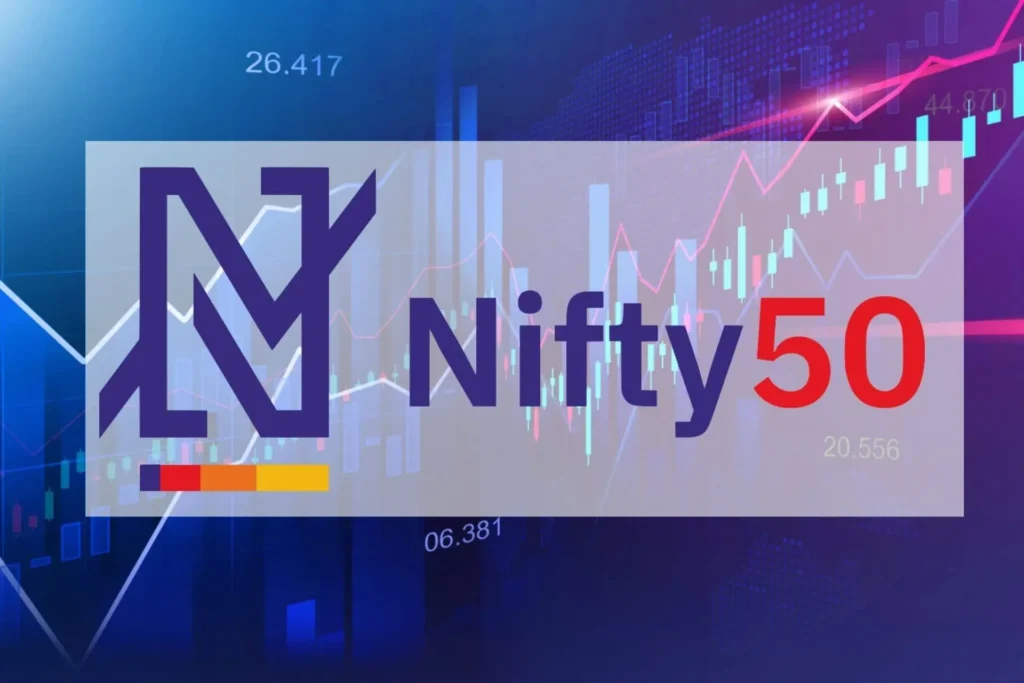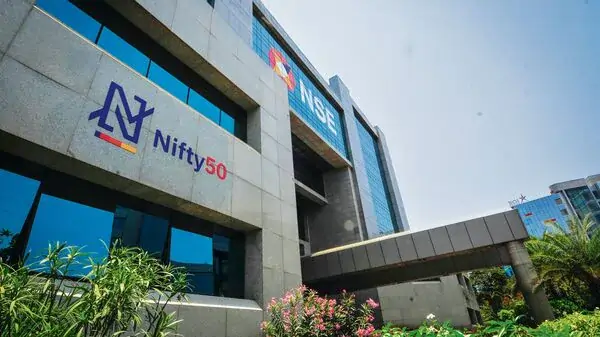The Nifty 50 is the premier stock index of the National Stock Exchange (NSE) of India. For anyone interested in the Indian stock market, understanding this index is vital. It not only represents the top-performing companies but also serves as a barometer for the health of the Indian economy. Over the years, the Nifty 50 has become the go-to index for investors who want to gauge the performance of India’s largest companies across various sectors.
This article will explore what the Nifty 50 is, how it operates, its significance to investors, and how it reflects the pulse of the stock market in India. Additionally, we’ll explore its historical context, the companies that make up the index, and how investors can leverage this information.
What is the Nifty 50?
The Nifty 50 is a stock market index that consists of 50 of the largest and most liquid companies listed on the NSE of India. Established in 1996, it captures a broad picture of the Indian economy by representing companies from sectors like banking, information technology, energy, consumer goods, healthcare, and telecommunications.
This index helps investors understand the overall direction of the stock market. As the value of these companies changes, so does the index. It serves as a benchmark for stock market performance and offers investors insights into how well the leading companies in India are doing. The Nifty 50 is comparable to global indices like the S&P 500 in the United States and the FTSE 100 in the United Kingdom.
Why is it So Important?
The Nifty 50 holds immense significance for many reasons, from its role in financial markets to its broader economic implications. Here’s why it matters:
- Market Benchmark: It is the most commonly used index for benchmarking portfolio performance. Fund managers, investors, and even the media frequently use it to gauge whether their investments are performing better or worse than the market.
- Economic Indicator: The companies in this index come from diverse sectors, making it a good indicator of overall economic health. A rise in the index generally signals economic growth, while a drop might indicate broader economic troubles.
- Global Appeal: Foreign investors look to the Nifty to understand the state of India’s economy. Many international funds track or invest in Indian companies based on this index, making it a key player in global markets.
- Investment Tool: Investors can buy index funds or exchange-traded funds (ETFs) that replicate this index, gaining exposure to the entire market in one simple investment. This makes it an accessible option for those who want diversified exposure to India’s top-performing companies.
- Liquidity and Stability: Companies listed in this index are large-cap, highly liquid, and stable. This means they carry lower risk compared to smaller, more volatile stocks, making them a safer option for long-term investments.

Sectors Represented
The Nifty 50 is not confined to any single industry. It covers various sectors, which helps it accurately reflect the performance of the broader economy. Some key sectors include:
- Information Technology (IT): India’s IT sector is world-renowned, with major companies like Tata Consultancy Services (TCS), Infosys, and Wipro being part of the index. These companies generate significant revenue from international markets.
- Energy: The energy sector, which includes companies like Reliance Industries and ONGC, plays a crucial role. These companies are involved in oil, gas, and alternative energy, reflecting India’s focus on both traditional and renewable energy sources.
- Consumer Goods: Fast-moving consumer goods (FMCG) companies, including Hindustan Unilever and ITC, cater to India’s growing consumer demand. They contribute significantly, highlighting the importance of domestic consumption.
- Pharmaceuticals and Healthcare: India’s pharmaceutical industry is a major global player, and companies like Dr. Reddy’s Laboratories and Sun Pharma are key contributors.
- Automobiles: The automotive industry, represented by companies like Maruti Suzuki and Tata Motors, plays a vital role in the index and in India’s economy.
How is it Calculated?
The Nifty 50 uses a market capitalization-weighted methodology based on free-float capitalization. This means that the index gives more weight to companies with higher market capitalization. However, it only considers the shares available to the public for trading, excluding the shares owned by promoters or other strategic stakeholders.
The calculation is based on the following formula:
Index Value = (Current Market Value / Base Market Capitalization) × Base Index Value
The base year for the Nifty 50 is 1995, with a base value of 1,000 points. This means that the index’s value was set at 1,000 during the base year, and all subsequent movements reflect the growth or decline of the 50 companies relative to that baseline.
Historical Performance
Since its inception in 1996, the index has provided investors with a consistent measure of market performance. Although it has experienced periods of volatility, it has generally trended upwards over the long term, offering solid returns to investors who have held on for extended periods.
- The 2008 Financial Crisis: Like most global indices, it took a sharp hit during the 2008 financial crisis. However, it rebounded relatively quickly, thanks to strong domestic growth and the resilience of Indian companies.
- COVID-19 Pandemic: In 2020, the pandemic caused a sharp dip as markets worldwide reeled from the uncertainty. However, by mid-2021, the index had not only recovered but also hit new all-time highs, driven by strong performance in technology, pharmaceuticals, and consumer goods.
- Long-term Growth: Over the years, the index has proven to be a reliable indicator of economic growth, consistently outperforming other emerging market indices. For long-term investors, it has provided attractive returns, especially when adjusted for risk.

How to Invest in the Nifty 50
For investors, there are multiple ways to gain exposure:
- Index Funds: Index funds track this index by investing in the same 50 companies in proportion to their weighting. These funds are a low-cost way for investors to gain exposure to the entire index.
- Exchange-Traded Funds (ETFs): ETFs that track the index can be bought and sold on stock exchanges like regular shares. This allows investors to enter and exit positions quickly, offering liquidity along with the diversification benefits of the index.
- Mutual Funds: Many mutual funds include Nifty companies in their portfolios. While they may not replicate the index exactly, these funds offer a diversified investment option with exposure to India’s top companies.
- Derivatives: For more sophisticated investors, the NSE offers futures and options contracts based on the Nifty 50. These derivatives allow investors to speculate on the index’s future movements or hedge their positions.
- Direct Stock Investment: Investors can also choose to invest directly in the stocks that make up the index. While this requires more research and active management, it allows for greater control over individual investments.
Risks Involved in Investing
Like any investment, this index comes with its share of risks. While it offers diversification, several factors can still affect its performance:
- Market Volatility: Stock markets are inherently volatile, and this index is no exception. Global events, economic policies, or changes in investor sentiment can cause sharp fluctuations in the value of the index.
- Economic Factors: Inflation, interest rates, and government policies play a significant role in determining the index’s performance. For instance, a hike in interest rates may dampen market sentiment and lead to a decline in stock prices.
- Sectoral Risks: While the index is diversified across sectors, certain sectors like financial services or energy may experience downturns due to specific challenges like regulatory changes or fluctuations in global commodity prices.
- Global Influence: As India becomes more integrated into the global economy, foreign investors play a significant role in market movements. A withdrawal of foreign capital due to global uncertainties can negatively impact the index.
The Future of the Nifty 50
As India’s economy continues to grow, the Nifty 50 is likely to remain a key indicator of market health and investor sentiment. The companies that make up the index are not only leaders in their respective industries but are also well-positioned to benefit from India’s economic transformation.
In the future, the index may see more representation from sectors like technology, renewable energy, and digital services, reflecting the changing dynamics of India’s economy. Additionally, as more Indian companies go public and foreign investment continues to flow into the country, the index is likely to expand and evolve.




